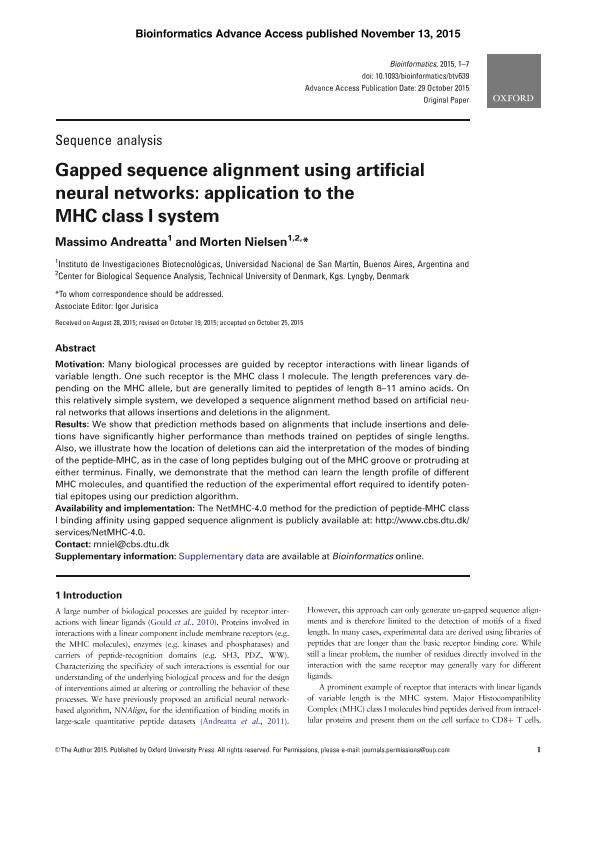Artículo
Gapped sequence alignment using artificial neural networks: Application to the MHC class I system
Fecha de publicación:
15/02/2016
Editorial:
Oxford University Press
Revista:
Bioinformatics (Oxford, England)
ISSN:
1367-4803
e-ISSN:
1460-2059
Idioma:
Inglés
Tipo de recurso:
Artículo publicado
Clasificación temática:
Resumen
Motivation: Many biological processes are guided by receptor interactions with linear ligands of variable length. One such receptor is the MHC class I molecule. The length preferences vary depending on the MHC allele, but are generally limited to peptides of length 8–11 amino acids. On this relatively simple system, we developed a sequence alignment method based on artificial neural networks that allows insertions and deletions in the alignment. Results: We show that prediction methods based on alignments that include insertions and deletions have significantly higher performance than methods trained on peptides of single lengths. Also, we illustrate how the location of deletions can aid the interpretation of the modes of binding of the peptide-MHC, as in the case of long peptides bulging out of the MHC groove or protruding at either terminus. Finally, we demonstrate that the method can learn the length profile of different MHC molecules, and quantified the reduction of the experimental effort required to identify potential epitopes using our prediction algorithm. Availability and implementation: The NetMHC-4.0 method for the prediction of peptide-MHC class I binding affinity using gapped sequence alignment is publicly available at: http://www.cbs.dtu.dk/ services/NetMHC-4.0.
Palabras clave:
SEQUENCE ALIGNMENT
,
MHC I
,
INSERTIONS
,
DELETIONS
,
PEPTIDE-MHC
Archivos asociados
Licencia
Identificadores
Colecciones
Articulos(IIB-INTECH)
Articulos de INST.DE INVEST.BIOTECNOLOGICAS - INSTITUTO TECNOLOGICO CHASCOMUS
Articulos de INST.DE INVEST.BIOTECNOLOGICAS - INSTITUTO TECNOLOGICO CHASCOMUS
Citación
Andreatta, Massimo; Nielsen, Morten; Gapped sequence alignment using artificial neural networks: Application to the MHC class I system; Oxford University Press; Bioinformatics (Oxford, England); 32; 4; 15-2-2016; 511-517
Compartir
Altmétricas




